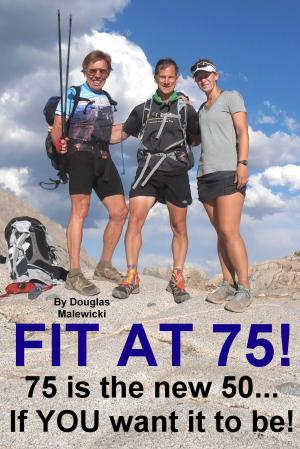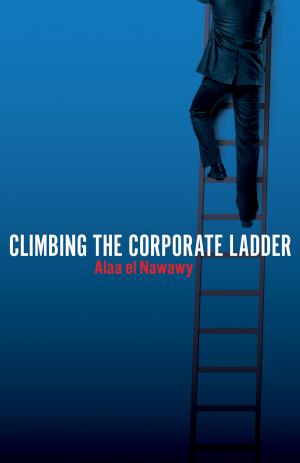I Never Worked In Pocatello —
The Life and Times of Santa Fe Railroad’s Paul T. Collins
Nonfiction, Reference & Language, Transportation, Railroads, History| Author: | Paul T. Collins | ISBN: | 9781483509419 |
| Publisher: | BookBaby | Publication: | October 28, 2013 |
| Imprint: | Language: | English |
| Author: | Paul T. Collins |
| ISBN: | 9781483509419 |
| Publisher: | BookBaby |
| Publication: | October 28, 2013 |
| Imprint: | |
| Language: | English |
The story of Paul T. Collins’s life working on the Atchison, Topeka and Santa Fe Railroad, I Never Worked In Pocatello —The Life and Times of Santa Fe Railroad’s Paul T. Collins, is the story of the changes in railroading from the end of the Nineteenth Century to past the middle of the Twentieth Century. Collins had the railroad and railroad wanderlust in his blood. His father spent his career working for railroads. Paul started at the age of sixteen as a station attendant for the Katy, the Missouri-Texas-Kansas Railroad, working twenty-four hours a day. His career path took him to: • Walsenburg, Colorado, where he learned many of the fundamentals of the railroad business and married his first wife, a woman who he had nicknamed “Old Sour Face.” • Pueblo, Colorado, where he and his family lived through the devastating flood of 1921 that killed hundreds (many swept so far away their bodies were never found) and meant rebuilding the tracks. • Kansas City, where he tried his hand at business but his dream of selling concrete wall form ties nationally, perhaps internationally, was killed by Black Thursday and The Great Depression. • Dodge City, Kansas, where he tried to reconcile differences with his first wife, but it was futile, and they soon divorced. • Chicago, where he served as the assistant to J.J. Mahoney, general railroad superintendent. This job brought Collins immense job and personal satisfaction as he investigated train timing and car content. He also spent considerable time investigating the business of carrying cattle on the railroads and the rates charged for transporting cattle. • Winslow, Arizona, where he oversaw the double tracking of twenty-one important miles and solved a longstanding bottleneck for the Santa Fe. In Winslow he fell in love with and courted his second wife. • San Bernardino, California, during World War II where Santa Fe railroad men suffered physical as well as nervous breakdowns and died from the work overload brought on by the crush of handling two transcontinental railroads with freight and passengers. • Wellington, Kansas, where his youngest daughter was born and he, along with his wife, became active in community affairs. • Amarillo, Texas, his final stop while working with the Santa Fe where he served as rules examiner for the railroad, creating new and better rules while butting heads with his fellow examiners, and sometimes his superiors. He ended his fifty-one years of service with the Santa Fe at this station. Immediately following his retirement, Collins took his wife for an extensive European tour. Always the railroader, part of the tour was spent on trains and talking about the difference between European and American trains with fellow railroaders. The railroads changed over the many decades Paul T. Collins worked on the Santa Fe. He changed with them, from a callow but strong youth moving freight to a middle-aged divorcée overseeing double tracking that moved the trains faster and, finally, to a senior rules examiner who retired after making the railroad safer for all.
The story of Paul T. Collins’s life working on the Atchison, Topeka and Santa Fe Railroad, I Never Worked In Pocatello —The Life and Times of Santa Fe Railroad’s Paul T. Collins, is the story of the changes in railroading from the end of the Nineteenth Century to past the middle of the Twentieth Century. Collins had the railroad and railroad wanderlust in his blood. His father spent his career working for railroads. Paul started at the age of sixteen as a station attendant for the Katy, the Missouri-Texas-Kansas Railroad, working twenty-four hours a day. His career path took him to: • Walsenburg, Colorado, where he learned many of the fundamentals of the railroad business and married his first wife, a woman who he had nicknamed “Old Sour Face.” • Pueblo, Colorado, where he and his family lived through the devastating flood of 1921 that killed hundreds (many swept so far away their bodies were never found) and meant rebuilding the tracks. • Kansas City, where he tried his hand at business but his dream of selling concrete wall form ties nationally, perhaps internationally, was killed by Black Thursday and The Great Depression. • Dodge City, Kansas, where he tried to reconcile differences with his first wife, but it was futile, and they soon divorced. • Chicago, where he served as the assistant to J.J. Mahoney, general railroad superintendent. This job brought Collins immense job and personal satisfaction as he investigated train timing and car content. He also spent considerable time investigating the business of carrying cattle on the railroads and the rates charged for transporting cattle. • Winslow, Arizona, where he oversaw the double tracking of twenty-one important miles and solved a longstanding bottleneck for the Santa Fe. In Winslow he fell in love with and courted his second wife. • San Bernardino, California, during World War II where Santa Fe railroad men suffered physical as well as nervous breakdowns and died from the work overload brought on by the crush of handling two transcontinental railroads with freight and passengers. • Wellington, Kansas, where his youngest daughter was born and he, along with his wife, became active in community affairs. • Amarillo, Texas, his final stop while working with the Santa Fe where he served as rules examiner for the railroad, creating new and better rules while butting heads with his fellow examiners, and sometimes his superiors. He ended his fifty-one years of service with the Santa Fe at this station. Immediately following his retirement, Collins took his wife for an extensive European tour. Always the railroader, part of the tour was spent on trains and talking about the difference between European and American trains with fellow railroaders. The railroads changed over the many decades Paul T. Collins worked on the Santa Fe. He changed with them, from a callow but strong youth moving freight to a middle-aged divorcée overseeing double tracking that moved the trains faster and, finally, to a senior rules examiner who retired after making the railroad safer for all.















